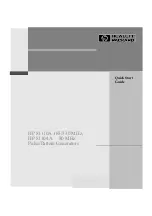
OB3 SQUARED
Organ Sound Generator
19
Although they affect the sounds of the upper section, the status of the percussion functions
cannot be saved in the memory
.
2.3 General controls
The following is a list of the instrument's general controls, common to all sections.
- At the top is the TONE section which adjusts the general equalization of the instrument; the
BASS trimmer adjusts the intensity of the bass tones while the TREBLE trimmer adjusts
the high tones.
- The MASTER section consists of the general
VOLUME control plus a control known as the
OVERDRIVE, which allows adjustment of the "saturation" effect: turn the trimmer to the
right to increase this effect.
N.B.: OVERDRIVE adjustment is only enabled if the ROTARY effect is active (see point
2.4).
- The REVERB section offers 4 types of reverb effects and 1 delay effects, as follows.
- OFF: No effect selected
- Delay: This effect is more commonly known as the echo.
- Spring: Simulates the reverberation produced by a spring system.
- Plate: Simulates the reverberation produced by a metal plate, of the type which remained
in vogue in recording studios for a long time.
- Room: Simulates the typical reverberation of a medium-sized room.
- Hall: Simulates the reverberation of a large hall.
The required effect is selected using the EFFECT knob, while the intensity of the selected
effect is adjusted using the VOLUME trimmer of this section.
- The VIBRATO AND CHORUS section also allows the user to select a number of effects
typical of the electromagnetic organ, such as the vibrato effect (available in 3 types, V1-V2-
V3) and the chorus effect, also available in 3 types (C1-C2-C3).
The Vibrato and Chorus knob (which has six preset positions) can thus be turned to select
one of the effects described above. Beside this knob there are two buttons, Lower and
Upper, used to send the selected Chorus or Vibrato effect to either of these sections.
N.B.: If the LEDS of both the Upper and Lower sections are off, the Chorus/Vibrato effect
will not be audible.
2.4 ROTARY effect
The success of the electromagnetic organ also brought popularity for a special amplification
system, the speakers of which turned on their own axes inside the speaker casing.
This amplifier (known as the Leslie ® amplifier), consisted of two sections, one for the
trebles and one for the basses, which were able to turn at different speeds. The OB-3
algorithm reproduces the effect of this amplification system in detail.
The Rotary effect is controlled using the SLOW and FAST keys as follows:
Содержание OB3 SQUARED
Страница 16: ......




































